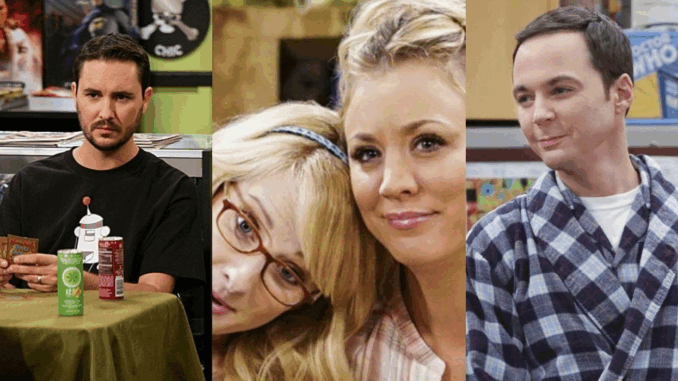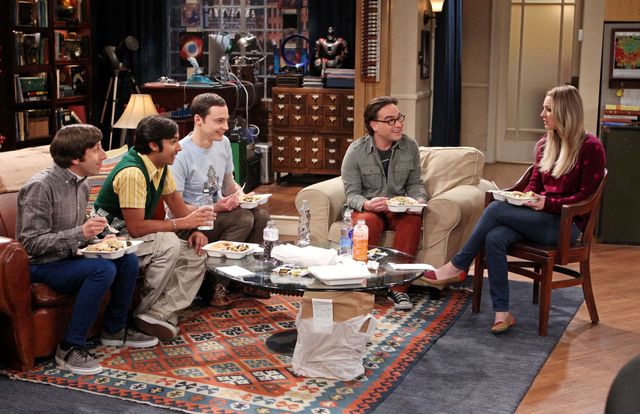
The Big Bang Theory aired for 12 seasons and became one of the most beloved sitcoms of the 21st century. Its mix of science, nerd culture, friendship, and romance brought in millions of viewers each week. But while audiences adored Sheldon’s quirks, Penny’s sass, and Howard’s awkward charm, there was just as much excitement happening off-screen. From casting surprises to scientific consultations, the show’s behind-the-scenes stories are every bit as entertaining as what played out in front of the camera.
Here are seven fascinating facts about The Big Bang Theory that might surprise even the most dedicated fans.
1. Sheldon Wasn’t Always a Physicist
In the original pitch, Sheldon Cooper wasn’t exactly the quirky theoretical physicist we know today. In fact, early drafts described him as more sexually active and less socially awkward. But as the character evolved — and after Jim Parsons auditioned — the writers leaned into his eccentric intellect and asexual tendencies, which became a defining part of the show’s identity.
It’s hard to imagine The Big Bang Theory without Sheldon’s scientific rants and rigid routines, but it nearly started very differently.
2. The Original Pilot Was a Total Flop
Before the series premiere we all know, there was an unaired pilot featuring Sheldon and Leonard — but no Penny. Instead, the female lead was a much different character named Katie, portrayed by Amanda Walsh. The dynamic felt off, and test audiences weren’t impressed.
The network gave the show a second chance with a retooled pilot, replacing Katie with the bubbly, more approachable Penny, played by Kaley Cuoco. That shift in chemistry helped make the show what it is today.
3. A Real Physicist Helped Keep the Science Accurate
Ever wonder how the characters seemed so fluent in scientific jargon? That’s thanks to David Saltzberg, a real-life physicist from UCLA. He reviewed scripts, corrected formulas on whiteboards, and even helped create experiments featured in the show. The goal was always to make the science feel authentic, even if the jokes were fictional.
Saltzberg’s influence helped earn the show praise from the scientific community — rare for a sitcom.
4. Mayim Bialik Is a Neuroscientist in Real Life
Mayim Bialik, who played Amy Farrah Fowler, isn’t just acting when she talks neuroscience. She actually holds a Ph.D. in neuroscience from UCLA. Her real-life expertise added another layer of authenticity to the show, and she’s spoken often about how her background shaped Amy’s character.
Bialik’s unique qualifications made her one of the few actors on television who could actually explain her character’s field of study in detail — and correctly.

5. Jim Parsons Never Watched Star Trek
Sheldon may have worshipped Spock and memorized every line of Star Trek: The Original Series, but Jim Parsons never had any interest in sci-fi. In fact, he admitted in interviews that he never watched Star Trek or read comic books before joining the show.
Despite that, Parsons committed fully to Sheldon’s obsessions, creating one of the most iconic nerd characters in television history.
6. Howard’s Mom Was Never Meant to Stay Off-Screen
Debbie Wolowitz, Howard’s loud and overbearing mother, became a fan-favorite mystery, with her voice booming from off-camera but her face never shown. Surprisingly, this wasn’t the original plan.
The show intended to cast someone in the role, but the voice-only gimmick — performed by Carol Ann Susi — proved so effective in early episodes that they kept it. Her presence was so strong that even without appearing on screen, Debbie felt like a full-fledged character.
7. The Cast Took Massive Pay Cuts for Equality
By the final seasons, the five main cast members — Jim Parsons, Johnny Galecki, Kaley Cuoco, Simon Helberg, and Kunal Nayyar — were earning $1 million per episode. But when Mayim Bialik and Melissa Rauch negotiated new contracts, the original five took a pay cut to boost their salaries.
This rare act of solidarity highlighted the cast’s deep bond and mutual respect, both on and off the screen. It was a move widely praised by fans and industry insiders alike.
As one of television’s most iconic sitcoms, The Big Bang Theory didn’t just rely on clever writing and geeky humor. It was also powered by thoughtful decisions, passionate actors, and a creative team committed to something special. Behind every joke was a carefully crafted world — and that’s what made the show a cultural phenomenon.
Whether you’re a casual viewer or a die-hard fan, these behind-the-scenes details reveal just how much care went into making The Big Bang Theory more than just another sitcom — it became a part of pop culture history.
